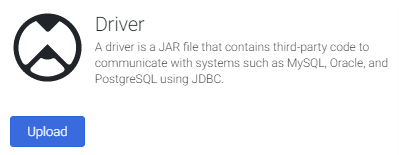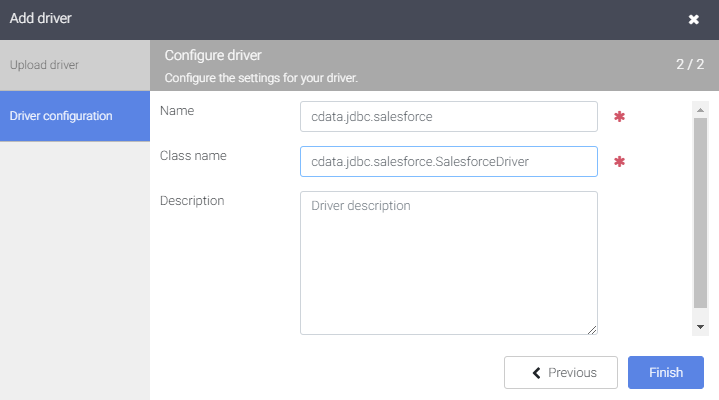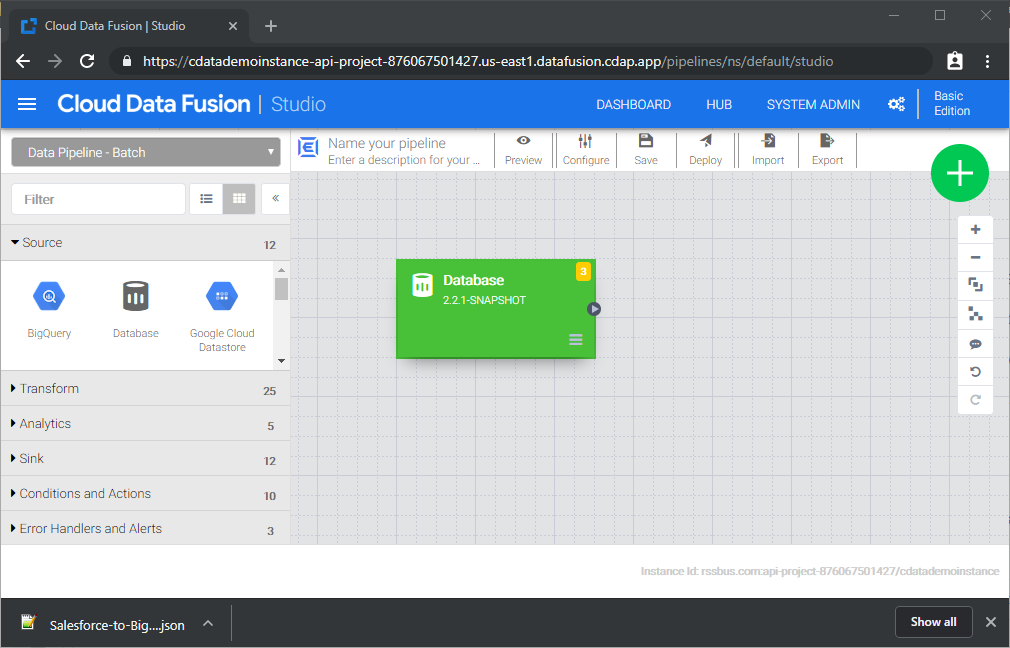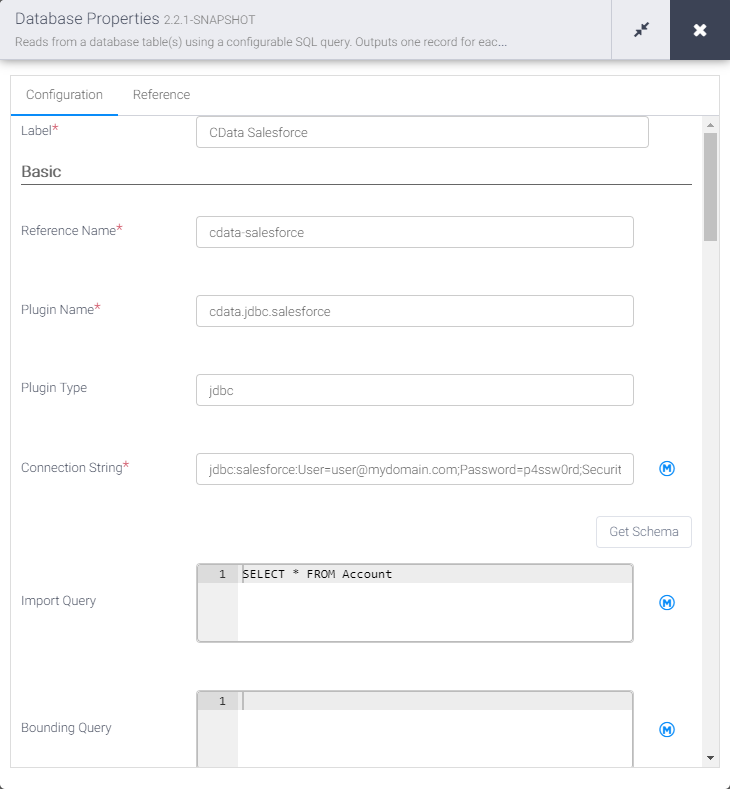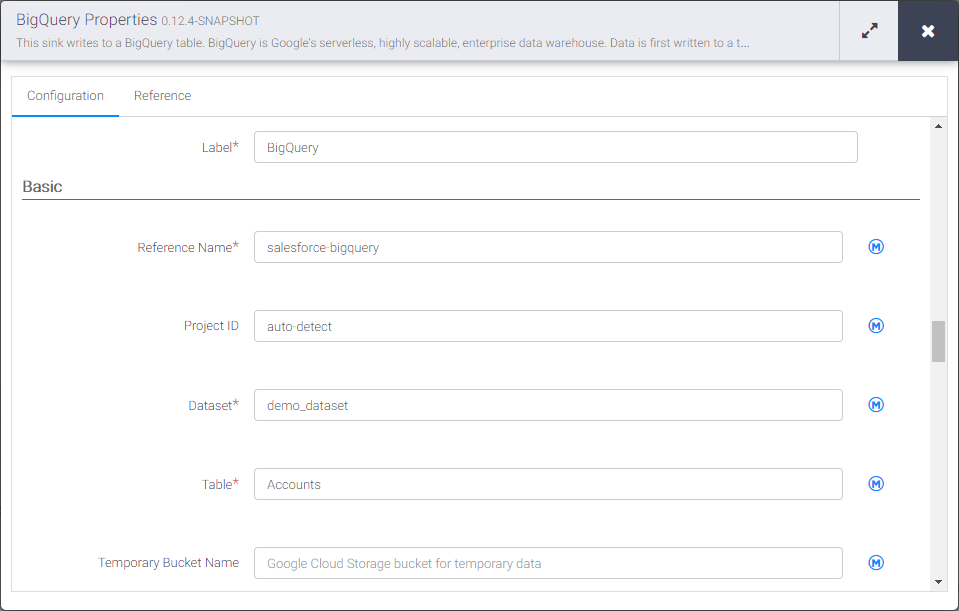Discover how a bimodal integration strategy can address the major data management challenges facing your organization today.
Get the Report →Build Gmail-Connected ETL Processes in Google Data Fusion
Load the CData JDBC Driver into Google Data Fusion and create ETL processes with access live Gmail data.
Google Data Fusion allows users to perform self-service data integration to consolidate disparate data. Uploading the CData JDBC Driver for Gmail enables users to access live Gmail data from within their Google Data Fusion pipelines. While the CData JDBC Driver enables piping Gmail data to any data source natively supported in Google Data Fusion, this article walks through piping data from Gmail to Google BigQuery,
Upload the CData JDBC Driver for Gmail to Google Data Fusion
Upload the CData JDBC Driver for Gmail to your Google Data Fusion instance to work with live Gmail data. Due to the naming restrictions for JDBC drivers in Google Data Fusion, create a copy or rename the JAR file to match the following format driver-version.jar. For example: cdatagmail-2020.jar
- Open your Google Data Fusion instance
- Click the to add an entity and upload a driver
![]()
- On the "Upload driver" tab, drag or browse to the renamed JAR file.
- On the "Driver configuration" tab:
- Name: Create a name for the driver (cdata.jdbc.gmail) and make note of the name
- Class name: Set the JDBC class name: (cdata.jdbc.gmail.GmailDriver)
![Configuring the driver (Salesforce is shown.)]()
- Click "Finish"
Connect to Gmail Data in Google Data Fusion
With the JDBC Driver uploaded, you are ready to work with live Gmail data in Google Data Fusion Pipelines.
- Navigate to the Pipeline Studio to create a new Pipeline
- From the "Source" options, click "Database" to add a source for the JDBC Driver
![Adding a database source]()
- Click "Properties" on the Database source to edit the properties
NOTE: To use the JDBC Driver in Google Data Fusion, you will need a license (full or trial) and a Runtime Key (RTK). For more information on obtaining this license (or a trial), contact our sales team.
- Set the Label
- Set Reference Name to a value for any future references (i.e.: cdata-gmail)
- Set Plugin Type to "jdbc"
- Set Connection String to the JDBC URL for Gmail. For example:
jdbc:gmail:RTK=5246...;User=username;Password=password;There are two ways to authenticate to Gmail. Before selecting one, first ensure that you have enabled IMAP access in your Gmail account settings. See the "Connecting to Gmail" section under "Getting Started" in the installed documentation for a guide.
The User and Password properties, under the Authentication section, can be set to valid Gmail user credentials.
Alternatively, instead of providing the Password, you can use the OAuth authentication standard. To access Google APIs on behalf on individual users, you can use the embedded credentials or you can register your own OAuth app.
OAuth also enables you to use a service account to connect on behalf of users in a Google Apps domain. To authenticate with a service account, you will need to register an application to obtain the OAuth JWT values.
In addition to the OAuth values, you will need to provide the User. See the "Getting Started" chapter in the help documentation for a guide to using OAuth.
Built-in Connection String Designer
For assistance in constructing the JDBC URL, use the connection string designer built into the Gmail JDBC Driver. Either double-click the JAR file or execute the jar file from the command-line.
java -jar cdata.jdbc.gmail.jarFill in the connection properties and copy the connection string to the clipboard.
![Using the built-in connection string designer to generate a JDBC URL (Salesforce is shown.)]()
- Set Import Query to a SQL query that will extract the data you want from Gmail, i.e.:
SELECT * FROM Inbox
![Configuring the database source]()
- From the "Sink" tab, click to add a destination sink (we use Google BigQuery in this example)
- Click "Properties" on the BigQuery sink to edit the properties
- Set the Label
- Set Reference Name to a value like gmail-bigquery
- Set Project ID to a specific Google BigQuery Project ID (or leave as the default, "auto-detect")
- Set Dataset to a specific Google BigQuery dataset
- Set Table to the name of the table you wish to insert Gmail data into
![Configuring the BigQuery sink]()
With the Source and Sink configured, you are ready to pipe Gmail data into Google BigQuery. Save and deploy the pipeline. When you run the pipeline, Google Data Fusion will request live data from Gmail and import it into Google BigQuery.
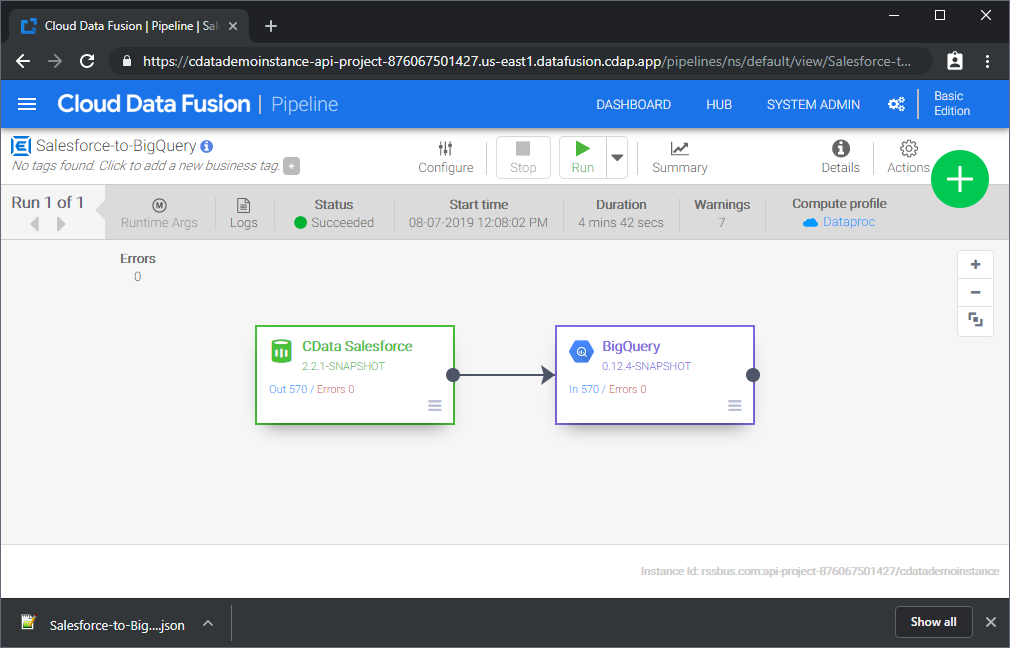
While this is a simple pipeline, you can create more complex Gmail pipelines with transforms, analytics, conditions, and more. Download a free, 30-day trial of the CData JDBC Driver for Gmail and start working with your live Gmail data in Google Data Fusion today.






